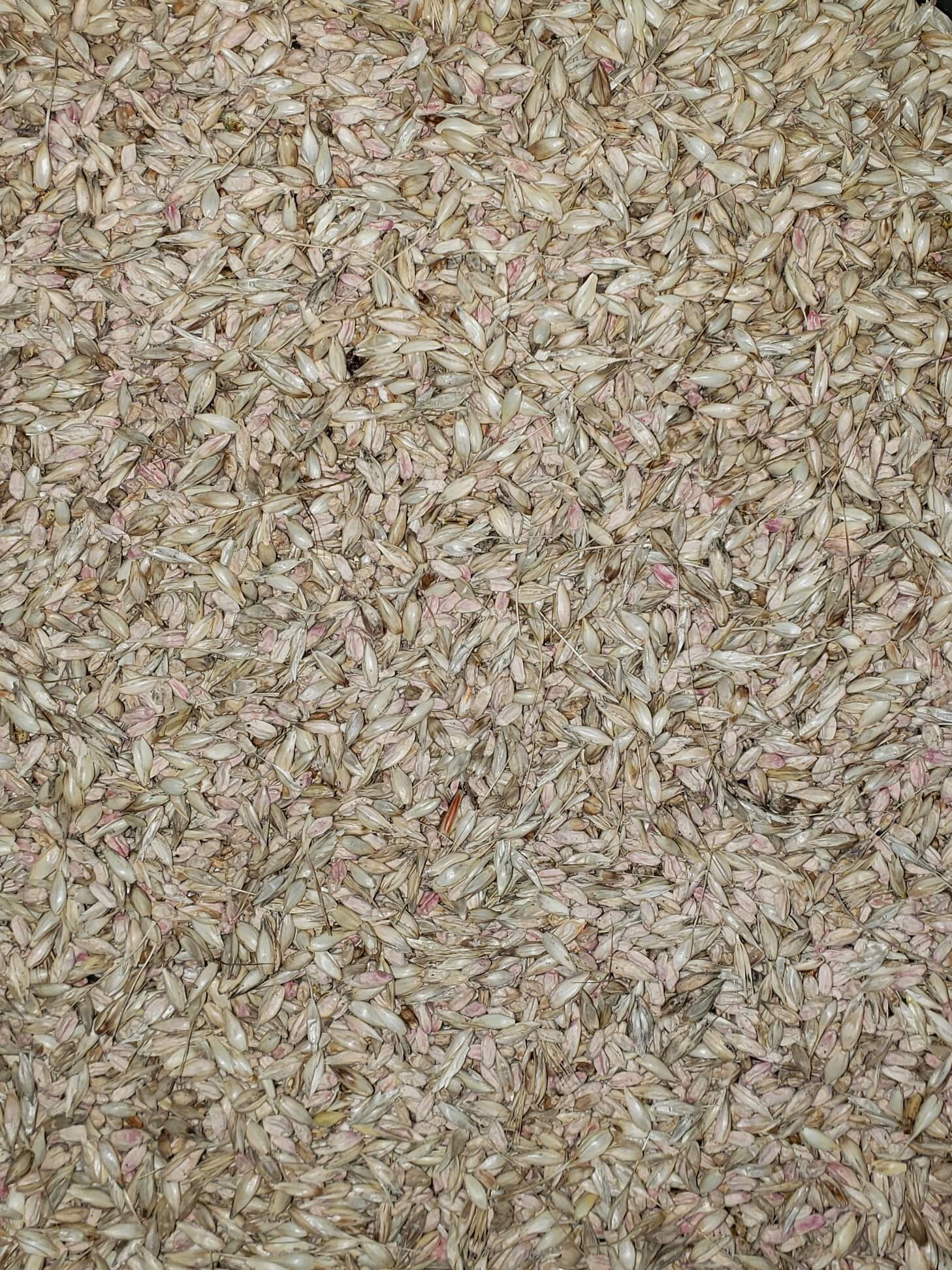Kansas, along with numerous other states across the United States, was dealt severe rainfall and abnormal weather conditions this spring and early summer. The rainfall and cool temperatures invited a breeding ground for various diseases, most notably Fusarium head blight (head scab).
Head scab can cause significant yield loss and grain quality reduction, and can be detrimental to seed germination. Unfortunately, the disease often goes undetected before it’s too late to control in the field.
Because controlling head scab disease pressure in the field can be unachievable, it’s critical to use effective practices after harvest to reduce the impact of infected seed.
Correctly identifying head scab-infected wheat will help with future management decisions. In the field, an entire wheat head or as little as only one spikelet may appear prematurely whitened or bleached. Head scab may also cause dark discoloration to the stem area where individual spikelets are attached. Once infected, the spikelets and glumes may start to show a pinkish, salmon-colored mass of spores.
Seed infection, on the other hand, is not always visible to the naked eye.
For example, he said some seed will have extreme infection. These kernels are dead with no chance of recovering and will appear white, chalky and shriveled. There is occasionally some pink discoloration to them. These are called tombstone kernels.
“When you have tombstone kernels, that means along with it you will have other seed that’s going to look perfectly normal, but it’s going to have some infection in the seed coat,” Fabrizius said.
Seed that has infection, but does not show signs, is generally still alive and may become an issue for growers when planted. As the infected seed starts to germinate, the fungus begins to grow, too, Fabrizius said. It then becomes a race of which is going to win – the seedling or the fungus.
If you do not plan to purchase new seed, it’s critical to take precautions to make sure you are eliminating the chance of the disease resurfacing and getting the most out of the seed as possible.
A grower with head scab-infected seed should have a professional germination test done from a trusted laboratory, like Kansas Crop Improvement Association. KCIA will look at individual seedlings and test them to let you know what level of quality your seed has.
Growers also need to make sure they have their seed cleaned well, and if possible, run the seed over a gravity table. Doing so will remove the lighter, dead seed. It is not uncommon to clean out 30 to 50 percent of the seed when trying to remove head scab-infected kernels. This is key to improving test weights and germination of the seed.
Fabrizius said that time is also on the grower’s side.
Fungicides seed treatments can also help infected seed.
“Fungicide seed treatments benefit the seeds that have a light infection and are still alive, but it can’t bring those that are heavily infected back from the dead,” Fabrizius said.
Your best chance at having healthy, viable seed is buying new, Certified Seed each year. Preventing the fungus from reoccurring should be at the top of every grower’s agenda, and that can be done by simply not saving your head scab-infected seed. When you buy Certified Seed, you can have confidence that your seed has high varietal purity, high physical quality, high germination and maximum yield potential.
The cost of cleaning, seed treatment and testing, with the risk of your seed being non-usable, can make the decision to buy seed easier.
Zenda and Everest, two KWA varieties, have some of the best scab tolerance to help prevent the possibility of quality and yield loss due to the disease.

